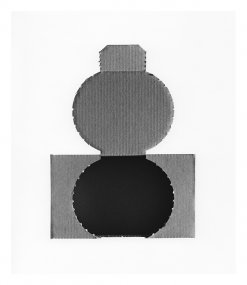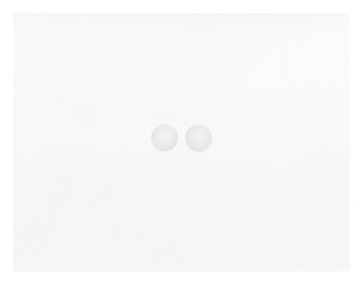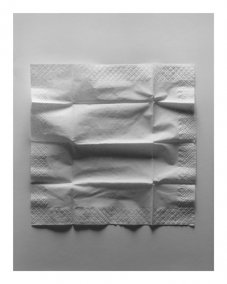Archive
...
23. 11. 2011 — 6. 1. 2012

Words of light
Although the word photogénie did not appear until the emergence of the motion picture, there is no doubt that photography existed at the beginning of the road that led to the discovery of photogénie. Although photogénie in film was linked with motion and time, various examples of the ‘photogénie de l’impondérable’ make it clear that it need not be linked only with time in film. After all, photography is also able to reveal photogénie, because photography too – though in its own way and only its own way – is able to capture that which, in the words of Jean Epstein, ‘the mind has no time to hold and the eye has no time or place to see’.
Light is the time of photography: the camera lens returns the eye its natural ability to establish a physical relationship with a thing, to perceive physical properties. It is irrelevant whether things have or do not have a function or purpose, as is the fact whether or not we are able to name them correctly. The physical form of things is not the same as its utility value and public identity. The appearance of utterly ordinary things is therefore even magically bewitching. The physical form of things, as it appears, is not the same as the form constituting the material; because a thing in its physical form is already only what it is – the form of its material and the material of its form.
The photographs of Marcel Stecker have no ambition to build with shadow and light the illusion of a three-dimensional depiction, because three dimensions are not enough to depict things that have extricated themselves from the world of objectivity and continue on in their physical form. And whereas photogénie in motion pictures requires a fourth dimension – time –, the fourth dimension in Stecker’s photographs is light. Everything material thus remains material, and at the same time also imponderable. Perhaps that is the photogénie which is proper to photography. A thing is the form of its material and the material of its form. Photography is the proper name of a thing, nothing objective, nothing formal, but nothing abstract either. Words of light.
Miroslav Petříček
www.marcel-stecker.cz
Although the word photogénie did not appear until the emergence of the motion picture, there is no doubt that photography existed at the beginning of the road that led to the discovery of photogénie. Although photogénie in film was linked with motion and time, various examples of the ‘photogénie de l’impondérable’ make it clear that it need not be linked only with time in film. After all, photography is also able to reveal photogénie, because photography too – though in its own way and only its own way – is able to capture that which, in the words of Jean Epstein, ‘the mind has no time to hold and the eye has no time or place to see’.
Light is the time of photography: the camera lens returns the eye its natural ability to establish a physical relationship with a thing, to perceive physical properties. It is irrelevant whether things have or do not have a function or purpose, as is the fact whether or not we are able to name them correctly. The physical form of things is not the same as its utility value and public identity. The appearance of utterly ordinary things is therefore even magically bewitching. The physical form of things, as it appears, is not the same as the form constituting the material; because a thing in its physical form is already only what it is – the form of its material and the material of its form.
The photographs of Marcel Stecker have no ambition to build with shadow and light the illusion of a three-dimensional depiction, because three dimensions are not enough to depict things that have extricated themselves from the world of objectivity and continue on in their physical form. And whereas photogénie in motion pictures requires a fourth dimension – time –, the fourth dimension in Stecker’s photographs is light. Everything material thus remains material, and at the same time also imponderable. Perhaps that is the photogénie which is proper to photography. A thing is the form of its material and the material of its form. Photography is the proper name of a thing, nothing objective, nothing formal, but nothing abstract either. Words of light.
Miroslav Petříček
www.marcel-stecker.cz
Works on display (a selection)
Exhibition opening
Marcel Stecker
*1988studios
2011M.A. in Photography, Film and Television Schoolof the Academy of Performing Arts (FAMU), Prague 2008B.A. in Photography, Film and Television School
of the Academy of Performing Arts (FAMU), Prague (2008-2011) 2004Photography, the School of Graphic Design (SPŠG),
Hellichova, Prague (2004-2008)
selected individual exhibitions
2010‘Smaller Angels’, Galerie Velryba, Pragueselected collective exhibitions
2011‘MGZN’, Fotografic, Prague 2011‘Praguephoto’, Mánes, Prague 2011‘Coruscating, Cruel, Beautiful, and Pale Pink’,Czech Embassy, Berlin 2010‘Private Workshops’, the AVU Gallery, Prague 2010‘Praguephoto’, Mánes, Prague
AtelierJosef Sudek
Újezd 30, 118 00 Prague 1, Czech Republic
Open daily except Monday 12 AM – 6 PM
Tel.: +420 251 510 760
Admission 10 CZK
/ free for students of art schools

















